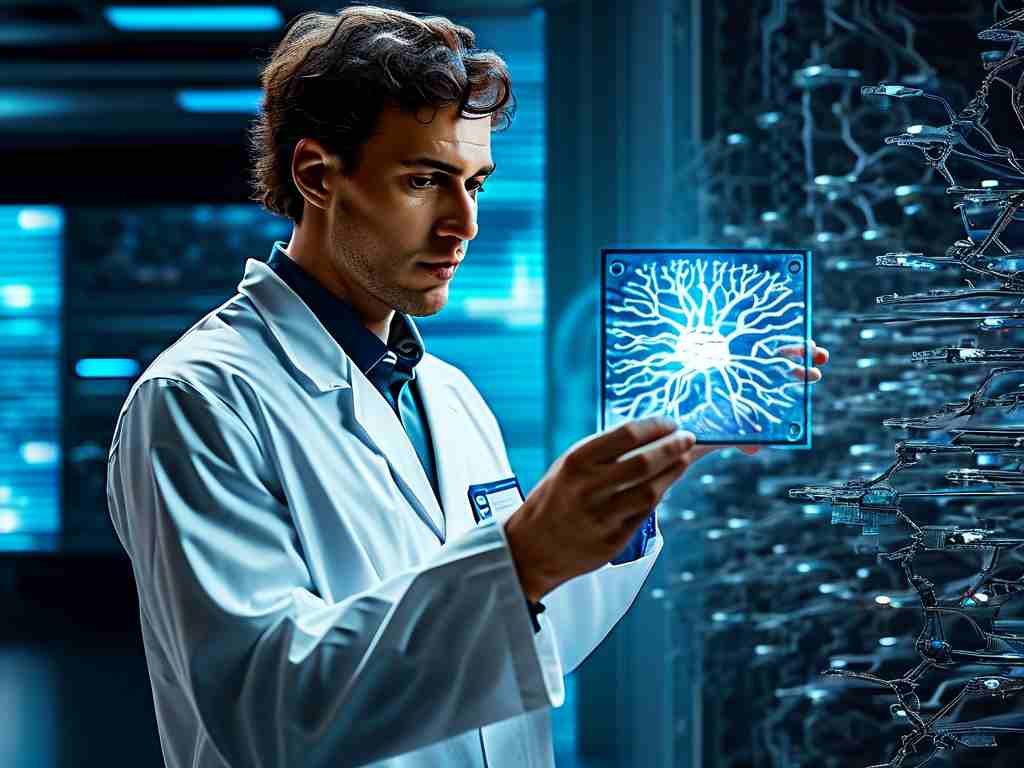The intersection of neural networks and Nobel Prize-winning research has become one of the most compelling narratives in modern science. As artificial intelligence evolves, its applications are increasingly bridging gaps in fields traditionally associated with the highest academic honors—physics, chemistry, and medicine. This synergy is not merely accelerating discoveries but reimagining what’s possible in human knowledge.

In the realm of chemistry, neural networks have transformed molecular analysis. A landmark example is the prediction of protein folding, a problem that stumped scientists for half a century. DeepMind’s AlphaFold, powered by deep learning algorithms, achieved near-experimental accuracy in modeling protein structures in 2020. This breakthrough has since been integrated into studies on neurodegenerative diseases like Alzheimer’s, where misfolded proteins play a critical role. Researchers at the Karolinska Institute, which oversees the Nobel Prize in Physiology or Medicine, now openly discuss how such tools could fast-track therapies previously deemed decades away.
Physics has similarly embraced AI’s potential. At CERN, neural networks process petabytes of data from the Large Hadron Collider, identifying patterns imperceptible to human analysts. These systems helped verify the Higgs boson’s properties and are now hunting for dark matter candidates. Dr. Sofia Kovács, a lead physicist at the facility, observes, “What took teams of hundreds five years to analyze in 2012 can now be cross-validated by AI in months.” This efficiency gain is critical as particle physics grows increasingly data-intensive—a trend likely to influence future Nobel-worthy breakthroughs.
Medical research presents perhaps the most human-centric applications. Neural networks now diagnose cancers from radiology images with precision rivaling senior oncologists. At Johns Hopkins University, an AI model recently identified early-stage pancreatic cancer in CT scans with 91% accuracy—a disease notorious for late detection. Such innovations align with the Nobel Assembly’s growing recognition of translational research. Meanwhile, projects like Insilico Medicine’s AI-designed drug candidates, now in clinical trials for fibrosis, exemplify how machine learning could reshape pharmaceutical development cycles.
Critics question whether AI’s role diminishes the “Eureka moment” central to Nobel lore. Yet proponents argue these tools amplify human creativity. The 2023 Nobel laureate in chemistry, Dr. Moungi Bawendi, credits machine learning for optimizing quantum dot synthesis—a process requiring nanoscale precision. “The AI didn’t replace intuition,” he clarifies. “It turned vague hypotheses into testable parameters, letting us fail faster until we succeeded.” This iterative approach is revolutionizing labs worldwide, from MIT’s AI-guided material science experiments to ETH Zurich’s automated chemistry platforms.
Ethical debates persist. As neural networks analyze Nobel-worthy datasets—from genomic information to climate models—issues of bias and accessibility emerge. The 2021 Physics Prize, awarded for climate modeling, reignited discussions about AI’s carbon footprint versus its potential to solve ecological crises. Initiatives like Google’s “AI for Sustainability” aim to balance these scales, employing neural networks to optimize renewable energy grids while minimizing computational waste.
The future may see AI itself becoming a Nobel contender. While the statutes prohibit awarding non-humans, collaborative human-AI discoveries are eligible. This raises fascinating questions: Could a neural network be credited as a co-inventor? How might selection committees evaluate contributions where machine insights sparked key breakthroughs? These discussions, already occurring in patent courts worldwide, may soon reach Stockholm’s Nobel halls.
What remains undeniable is neural networks’ democratizing effect. By automating tedious calculations and pattern recognition, they empower smaller research teams to tackle grand challenges. A recent Nature study showed papers involving AI are 35% more likely to be cited in high-impact journals—a proxy for Nobel relevance. From simulating supernova explosions to designing mRNA vaccine components, AI’s fingerprints appear across disciplines.
As the Nobel Prize enters its second century, neural networks stand poised to redefine scientific excellence. They are not replacements for human genius but force multipliers—tools that, when wielded with ethical rigor and creative vision, could unlock discoveries worthy of science’s highest honor. The next Einstein or Curie might well be a researcher who masters both pipettes and Python, blending laboratory brilliance with algorithmic insight to light humanity’s path forward.

